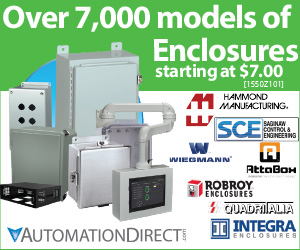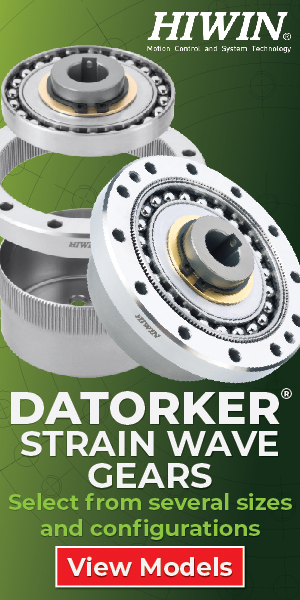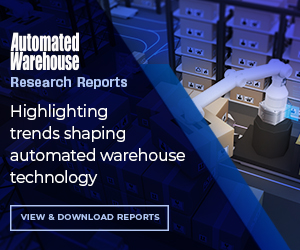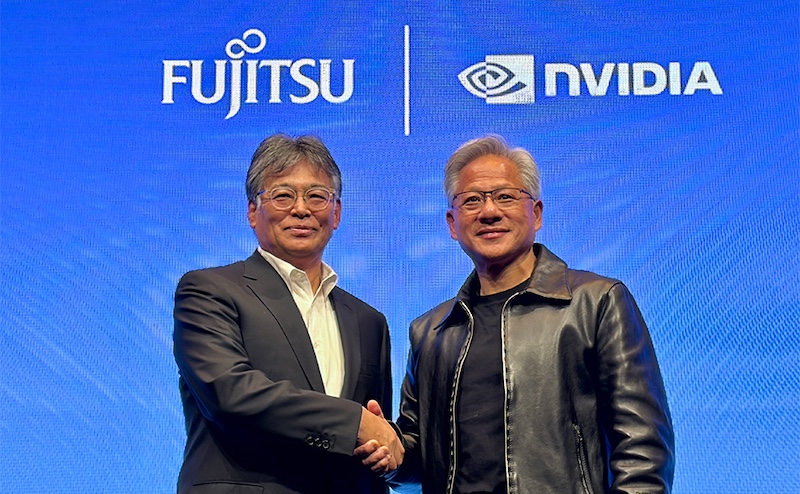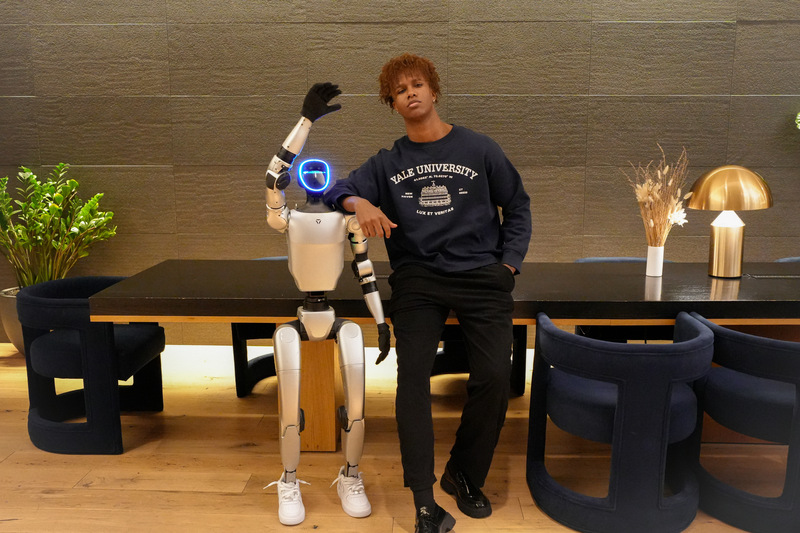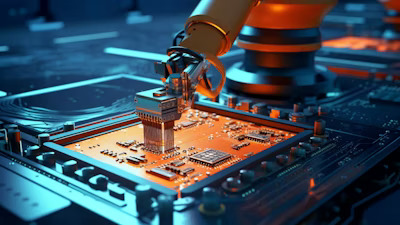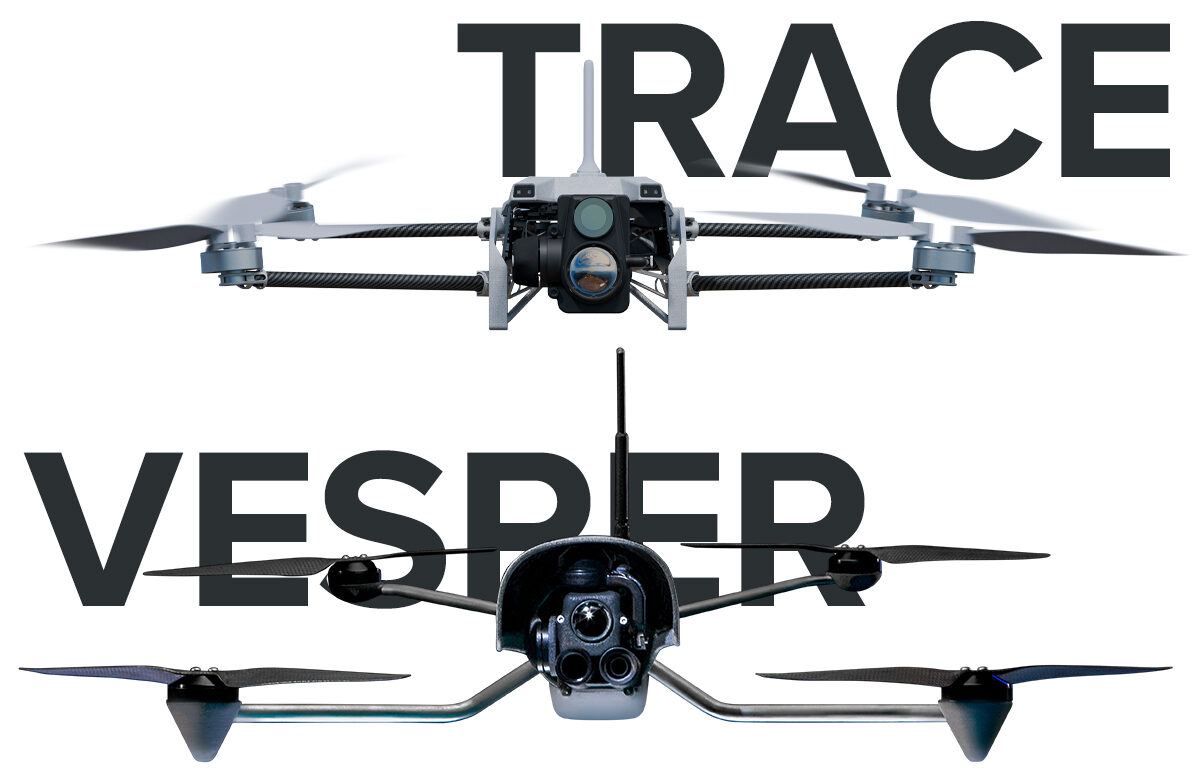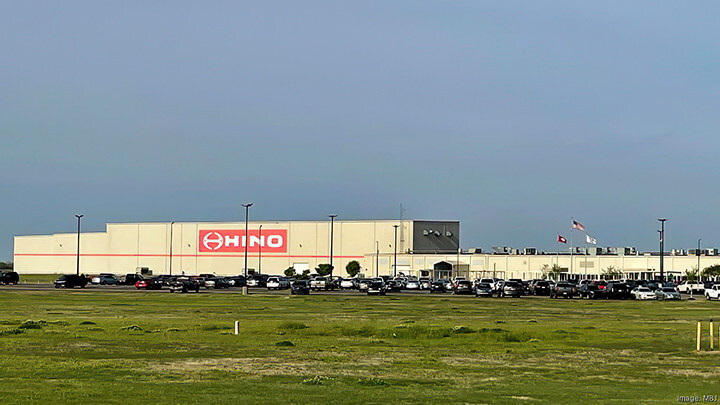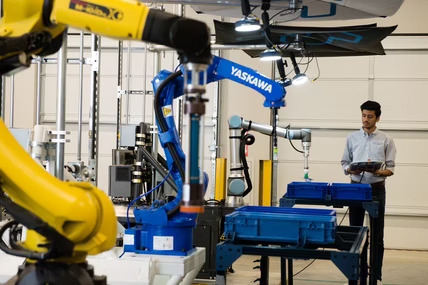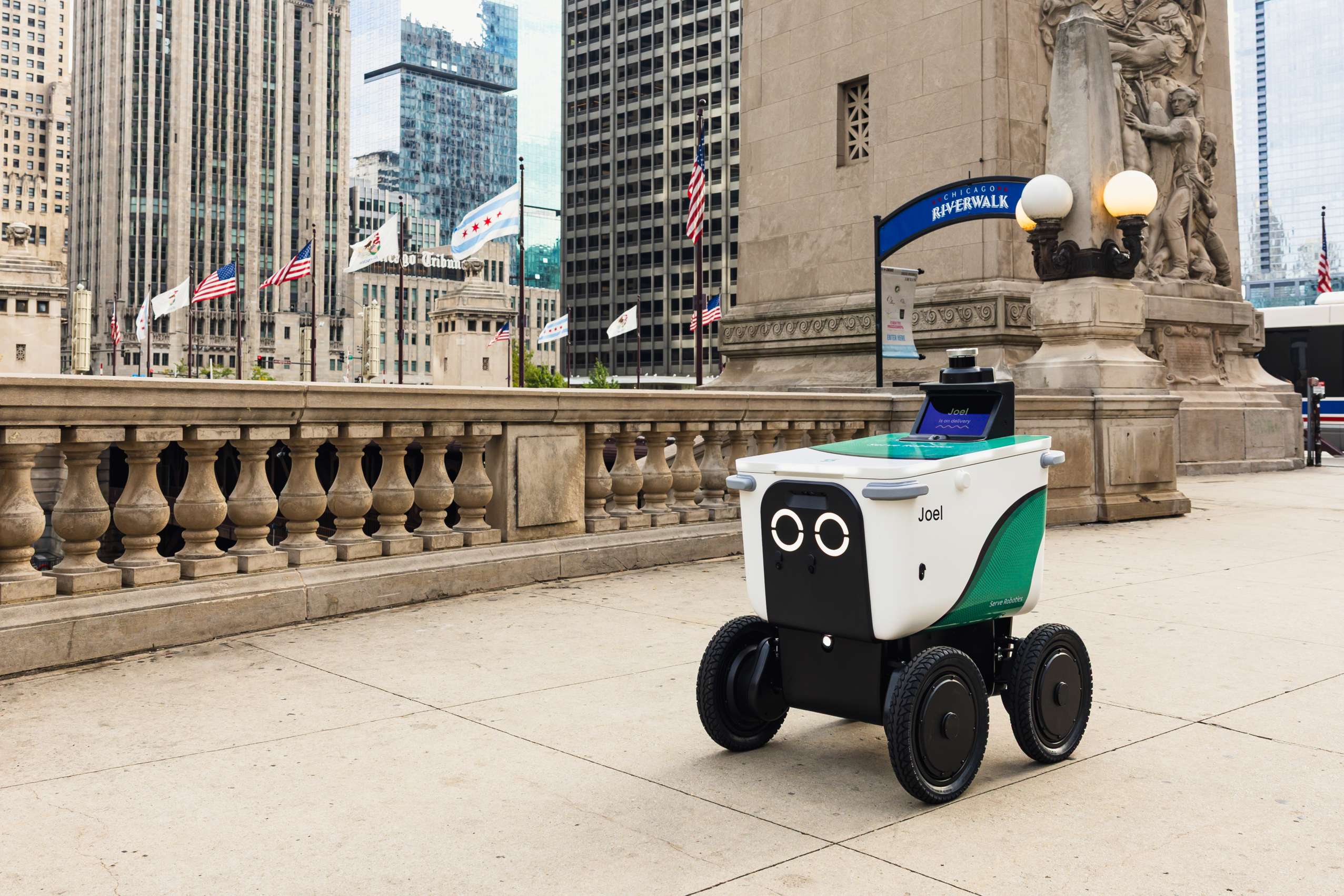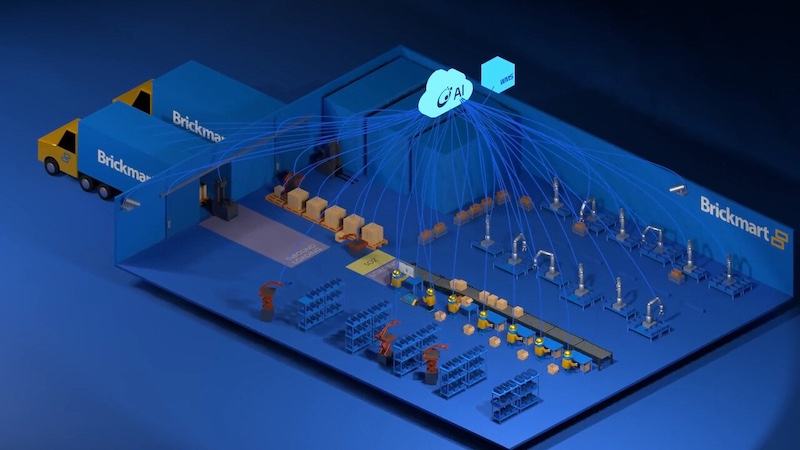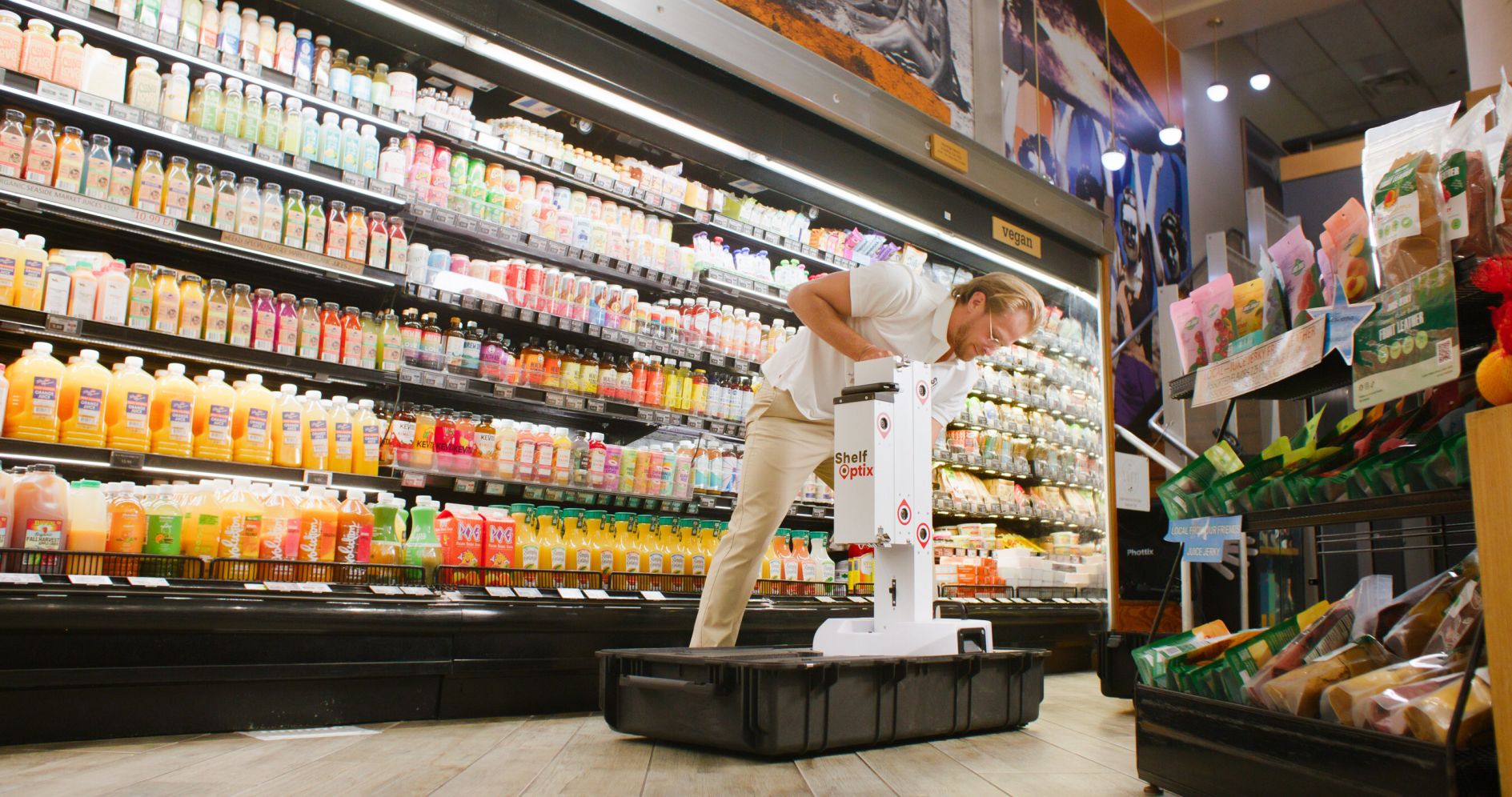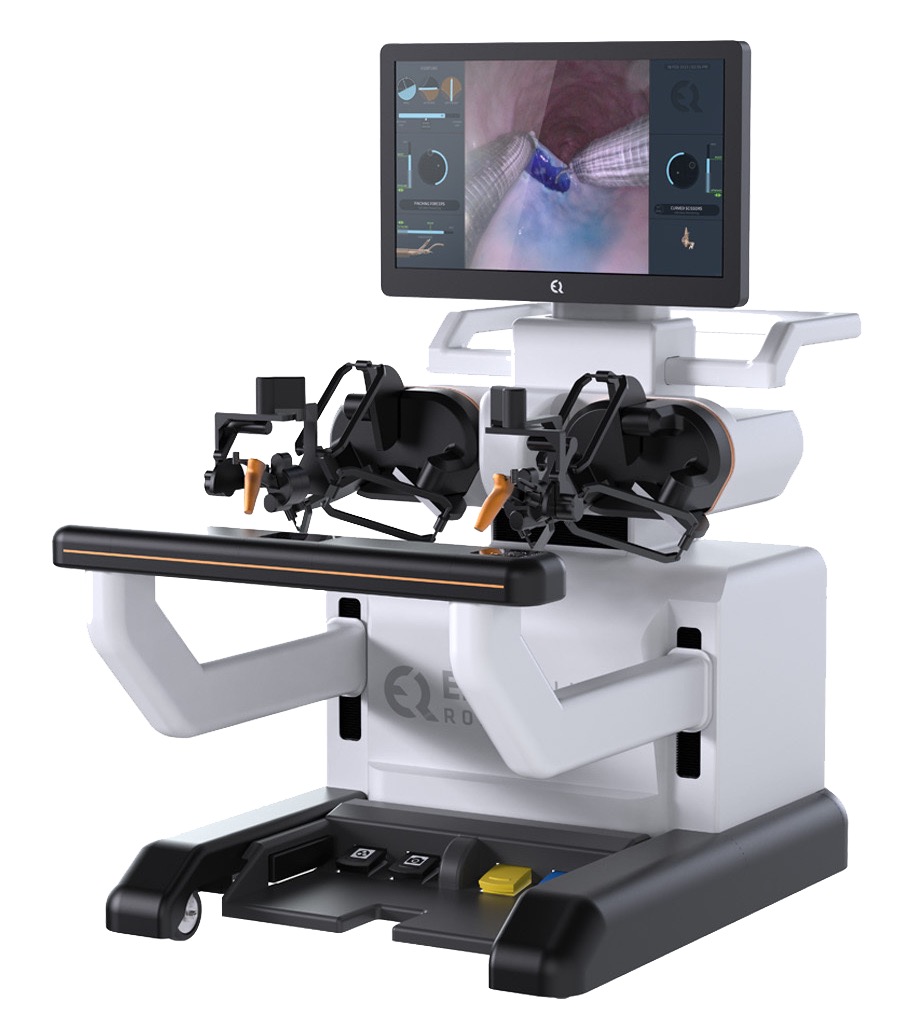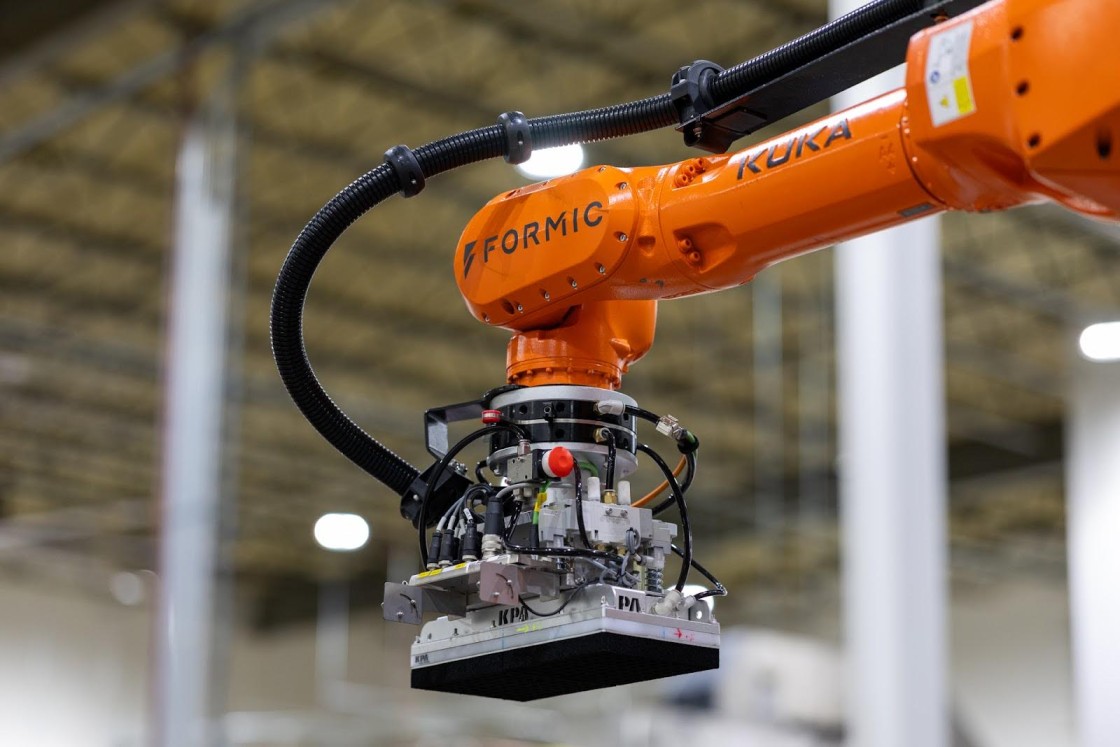Swarm Robotics Takes Flight: How H2 Clipper Is Reinventing Aerospace Manufacturing
23 April 2025 | Expert Insight | By editor@rbnpress.com
Rinaldo Brutoco, Founder & CEO of The World Business Academy, on leveraging nature-inspired robotics to build the world’s largest green airships
In this exclusive interview with Robotics Business News, Rinaldo Brutoco shares how swarm intelligence, generative AI, and robotics converge to transform not just aircraft assembly—but the entire future of manufacturing. As the mastermind behind H2 Clipper’s revolutionary hydrogen airship, Brutoco explains why traditional assembly lines are no longer fit for purpose when building 1,000-foot-long aerospace structures. Drawing inspiration from ant colonies and leveraging patented swarm robotics, H2 Clipper is poised to redefine efficiency, scalability, and precision in aerospace production—ushering in a new era of intelligent, autonomous manufacturing.
What inspired the integration of swarm robotics into H2 Clipper’s aerospace manufacturing process?
“Necessity is the mother of invention” is an oft-repeated maxim. It also explains what happened with the idea to develop Swarm Robotics for large, complex manufacturing projects. As the principal designer of a revolutionary new aircraft, the H2 Clipper, we procured dozens of basic patents for building a 100% “green,” lighter-than-air dirigible for delivering liquid hydrogen from where it was able to be produced at the lowest cost to metropolitan or rural areas with the greatest need for clean energy.
The economic model we worked with required the airship to carry up to 400,000 pounds of liquid hydrogen in one direction and an equal amount of freight in 20-foot containers in the opposite direction. To do that, the airship needed to be 1000 feet long and 200 feet in diameter at its midpoint.
When we completed the basic R&D design for the aircraft using the advanced computer systems available to us from our partners at Dassault Systèmes 3DEXPERIENCE Lab (“3DS”), I realized that mass-producing these airships would require a completely new approach to manufacturing. A traditional assembly line would need a hangar over 25 stories tall and several miles long, making production of the aircraft impractical and uneconomic.
The breakthrough came from an unexpected source: a colony of ants. As I watched them transport a large leaf—without a leader, without hesitation, and yet in perfect harmony—it struck me: this was nature’s answer to manufacturing. Ants don’t rely on linear processes. Rather, they operate as a decentralized swarm, adapting dynamically to their environment. “What if robots could do the same—coordinating autonomously to assemble large, complex structures?”
Of course, the idea of swarm intelligence is not new. Researchers in artificial intelligence, robotics, and even military strategy have explored how self-organizing systems—like ant colonies, schools of fish, and flocks of birds—solve complex problems without centralized control. The concept has been applied to software algorithms, drone coordination, and even logistics planning. But what had never been done—what no one had attempted—was applying these principles to the construction of large-scale structures. That was the missing piece. That was the insight that led to the birth of Swarm Robotics in our patents for aircraft, spacecraft, and airship manufacturing.
Can you explain how H2 Clipper’s patented swarm robotics system differs from traditional robotic automation?
In the patent, we articulate a hierarchical progression of programming required to achieve full GenAI capability, ensuring that our intellectual property encompasses all three phases of development. Level 1 focuses on programming multiple ambulatory and floor-mounted robots to operate in unison, constructing the aircraft from the ground up without requiring any movement of the structure until it is fully assembled and ready to exit the hangar. This foundational stage establishes coordinated, automated assembly, setting the groundwork for more advanced AI-driven operations. Our partners at Dassault Systémes 3DS have expressed interest in providing this “Level 1” robotic programming.
Level 2 programming is where conventional, advanced programming transitions from conventional automation to adaptive AI-driven robotics. At this level, robots not only execute tasks but also self-regulate and coordinate their functions dynamically. The system moves beyond pre-programmed repetition and introduces machine-learning algorithms that enable real-time collaboration and autonomous problem-solving, each being a critical step for decentralized manufacturing.
As described in the patent, we are not starting from scratch in reaching Level 2. Companies like Arrival have already demonstrated the potential of autonomous robotics in manufacturing, deploying self-aware robots that coordinate without a conventional assembly line. Tesla’s Gigafactories, while impressive, still rely on a linear production model—using automation to optimize existing processes rather than redefining them. Arrival took a step further with its Micro-factories, proving that flexible, autonomous robotics can replace traditional fixed tooling and conveyor systems. This innovation provides a strong foundation for advancing Swarm Robotics in aerospace.
However, scaling this approach from a car or minivan to account for the size and complexity of assembling aircraft and aerospace structures introduces entirely new levels of difficulty. Unlike automotive manufacturing, which deals with smaller, modular components, the fabrication of large aerospace assets requires a higher degree of autonomous coordination, precision, and adaptability. As described in our patent, Swarm Robotics at Level 2 leverages existing manufacturing innovations while extending them into a domain where traditional factory footprints and conventional automation techniques are no longer viable.
Achieving Level 3 robotic programming is what these processes will naturally evolve to as we move beyond Level 2. To enable this, the patent explains that the Level 2 software would be taught the proprietary process. It would then be educated on how parameters for the software had been set to be able to “understand” what it was taught to do and how, and then instruct it to begin teaching itself. That is the point where Level 3 or GenAI begins. Swarm Robotics incorporates all three of these levels, setting it apart from automation as we know it today.
How do the robots collaborate or communicate during complex assembly tasks?
H2 Clipper’s newly patented system employs a network of robots that operate collaboratively and autonomously, in constant communication by Bluetooth, to construct large aerospace structures with unprecedented efficiency and a dramatically smaller production facility footprint. The hanger designed to our specifications by Burns McDonnell is only 1500 feet long in order to construct an airship that is 1,000 feet long. The Swarm Robotics innovation includes:
- Automated Manufacturing: Robots work in a coordinated “swarm” to assemble airframes, attach the exterior skin, install structural and many internal components, perform bonding and fastening operations, conduct in-process quality inspections, and carry out other complex, high-precision tasks.
- AI-Driven Optimization: Machine learning and generative AI guide the robotic swarm to self-correct, improve manufacturing precision, reduce errors, and optimize construction timelines.
- Scalability and Safety: The system uses built-in sensors and AI-driven oversight to safely manage all operations, assuring collision-free operation and eliminating the need for workers to operate at dangerous heights. With no fixed assembly line or gantries required, manufacturing can be supervised remotely and scaled across multiple locations.
- Heavy-Lift Robotics Integration: The technology enables large-scale structures to be constructed entirely in place, horizontally or vertically, using autonomous robots capable of repositioning and aligning major components. This flexibility supports multiple assembly approaches while reducing infrastructure requirements and improving safety.
What role does AI or machine learning play in coordinating these robotic swarms?
Humans, with our limited processing capability, will not be able to define the myriad of relationships that have to exist from second to second if we intend for the robots to act with one mind as ants do. Creating a “smart” mind is so complex an undertaking that we require machines capable of self-learning, software generation. In effect, we have to create the programming equivalent of millions and millions of synapses firing simultaneously every microsecond with a variety and speed no human could program. GenAI can and will—and it won’t stop with aircraft manufacturing. The robotic manufacturing approach described in the patent will ultimately be utilized for an endless array of large structure manufacturing, and eventually for small-scale as well.
The shift from human-defined algorithms to self-evolving AI will ultimately make Swarm Robotics capable of unprecedented levels of precision, adaptability, and efficiency. Most people are familiar with ChatGPT, which uses GenAI models that pull data from the internet in vast amounts to generate high-quality human-like text, images, and other content in response to a user’s request. Swarm Robotics will apply the same principle to robotic manufacturing, allowing autonomous robots to coordinate action, communicate, and adapt their processes in real-time.
Swarm Robotics will use GenAI to create a self-learning common mind among two or more interconnected autonomous or floor-mounted robots that can interact with each other and react to the environment autonomously. These robot swarms will be used to manufacture large physical structures like airplanes and spacecraft without moving the structure during production with minimal human supervision. This will eliminate the assembly line entirely.
Industry Impact & Advantages
In what specific areas of aerospace manufacturing have / will you see the greatest performance gains using swarm robotics?
The speed and accuracy obtained from using Swarm Robots operating 24 hours per day will save massive amounts of cost and time. In a similar vein, Swarm Robotics will permit a level of accuracy in the fabrication of existing aircraft designs by eliminating human error caused by fatigue, distraction in the assembly process, carelessness (e.g., omitting to properly bolt an aircraft door), or failure to adhere strictly to fabrication designs.
What efficiency, cost, or quality improvements will there be with this technology?
By replacing traditional assembly lines with robotic swarms, this breakthrough enables aircraft and large aerospace assets to be built faster, at a significantly lower cost, and with far greater precision. Conservative estimates based on current aerospace production benchmarks suggest this approach can reduce total manufacturing costs by 40% or more, and cut production timeframes by up to 60%, while simultaneously improving quality.
Could swarm robotics change how future airships or aircraft are designed—more modular or adaptable perhaps?
Aircraft manufacturing has evolved, but the assembly-line model has not. Modern aircraft are larger, more complex, and produced in lower volumes, making rigid, linear production methods increasingly inefficient. The limitations of traditional assembly lines—massive factory footprints, costly infrastructure, and an inability to adapt to modern aerospace materials—have become roadblocks to progress. Assembly lines require massive factory spaces, demand huge capital investments, and struggle to integrate new materials and manufacturing techniques. These challenges only grow as aircraft structures become more advanced and supply chains more fragmented.
To meet the demands of 21st-century aerospace, the industry needs a new technology that eliminates these inefficiencies—one that is adaptive, intelligent, and capable of assembling aircraft faster, cheaper, and with greater precision. That solution is Swarm Robotics. The aircraft manufacturers that utilize this new production technique first will have a dramatic competitive advantage over their slower-to-adopt peers.
The use of Swarm Robotics in aerospace production significantly reduces manufacturing time and costs, while enabling unparalleled precision and continuous round-the-clock autonomous production.
This patent represents a game-changing moment for aerospace manufacturing—a shift as significant as the invention of the assembly line itself. Swarm Robotics gives OEMs the ability to build aircraft and spacecraft smarter, faster, and more affordably than ever before, opening the door to a new era in aviation and the future of flight.
How scalable is this technology for broader aerospace or even non-aerospace manufacturing sectors?
There are innumerable commercial, environmental, and safety advantages for fabricating existing aircraft utilizing Swarm Robotics. Beyond those near-term manufacturing and financial advantages of employing Swarm Robotics, there are other clear advantages. Accordingly, it is hard to imagine that Swarm Robotics won’t heavily influence future aircraft, autonomous drones, electric short-range passenger vehicles (e.g. sky taxis), military and spacecraft design. When we look at history, we observe that new production techniques give way to new human systems. This is true from the Bronze Age, when humans learned the metallurgical process for combining different metals to create new weapons and agricultural tools; to the invention of the process for fabricating all the modern technological marvels brought to us by the Age of the Microchip.
Knowing that we can fabricate and service aircraft using Swarm Robotics will not only unleash the age of lighter-than-air aircraft that will revolutionize air passenger and air freight for generations to come, but it will also provide us with a faster, significantly more economical way to construct other aircraft and aerospace assets. We have already witnessed the marvel of SpaceX’s incredible reduction in the cost to launch a pound of cargo into space by using multiple re-used rocket ship sections. One can only imagine how even those costs will plummet further as Swarm Robotics creates ways to economically mass-produce new generations of spacecraft.
It is a truth as old as civilization that faster, less expensive, safer, and more reliable manufacturing methods always advance human civilization in a myriad of ways.
Forward-Looking & Strategic
Are there plans to license this technology to other aerospace manufacturers or industries?
With the patents now issued, H2 Clipper plans to assemble a select group of industry leaders in aerospace engineering, robotics, artificial intelligence, regulatory affairs, and advanced manufacturing to guide the next phase of development and demonstration. This expert team will play a key role in shaping a technology roadmap that supports potential licensing to OEMs—and may lay the groundwork for a broader industry consortium to accelerate the adoption of Swarm Robotics across the aerospace sector.
How does this innovation support H2 Clipper’s broader mission in green aviation and hydrogen-based transport?
We have been focused on addressing hydrogen infrastructure issues since 2008, and know that if given an opportunity, government officials and corporate leaders around the world will appreciate how our technologies for long-distance transport and “last-mile” distribution of hydrogen help enable the hydrogen economy.
Using a 21st-century airship design, modern materials and technologies, such as Swarm Robotics, H2 Clipper estimates being able to transport cargo 7-10 times faster than by ship, truck, or rail, at a 70% savings over traditional air transport.
Swarm Robotics is a major milestone that will greatly assist us in advancing our work to complete the detailed design and construction of a prototype, with the goal of flying the first full-sized airship within the next decade.
Do you see potential in combining swarm robotics with additive manufacturing or digital twin technology in the future?
The most common and cheapest application of additive manufacturing is fabrication by extrusion. We designed this approach into our Swarm Robotics construction methodology by extensively utilizing extruded carbon fiber as the key structural element in the exoskeleton of the ship itself. A more complex version of additive manufacturing utilizes 3D printing, which we also see being deployed as our entire ship has been developed on a full CAD/CAM system. This system has already produced fully manipulative and 3D-capable design features. In fact, our Dassault partners recently completed a fully interactive, 3D “walk-through” the length of our ship, which shows the internal spaces and how they are utilized right up to the cockpit, restroom, sleep bunks, and kitchen at the front of the ship.
As touched on directly above, we see the use of digital twin technology in a number of ways. We have already been able to do a simulated wind tunnel test on our new aircraft by using a Computational Fluid Dynamics (CFD) simulation to precisely calculate the final drag calculations on the actual airship as well as each external piece of it (e.g. the propeller engine mounts). We learned so much from that test that we re-designed the airship and did a 2nd CFD simulation and were able to reduce our total residual drag down so low it was less than the “skin friction” on our Teflon-covered exterior.z



